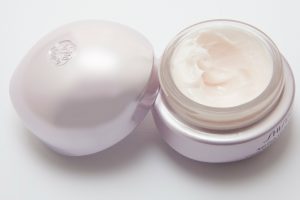
Working long hours, staying up late with a sick child, binge-watching a favorite TV show until the wee hours of the morning, late-night partying or insomnia due to stress and worry. There are many reasons people don’t get enough sleep. The National Sleep Foundation recommends adults get between 7 and 9 hours of sleep a night. According to the National Health Interview Study in 2018, 35.6% of adults in the U.S. regularly get 7 hours or less of sleep a night, that’s up from 30.9% in 2010. Worldwide, 51% of adults report getting less sleep than they need on an average night with 80% using the weekend to catch up on their sleep.
Besides causing tiredness, nervousness, irritability, and cognitive impairment, chronic sleep deprivation increases a person’s risk of 7 of the 15 leading causes of death in the United States, including cardiovascular disease, cancerous tumors, cerebrovascular disease, accidents, diabetes, septicemia, and hypertension.
In addition, sleep deprivation affects the largest organ of the body: the skin. Lack of sleep leads to high cortisol levels which in turn interfere with how the skin regenerates and heals itself. Continuously high cortisol levels also lead to lower levels of human growth hormone and a breakdown in collagen and elastic tissue. Together this leads to thinning skin and fine lines and wrinkles. When a person sleeps less than the optimal amount of hours, their skin cells also produce fewer antioxidants. Antioxidants protect against damage from the sun’s ultraviolet rays. Lack of sleep promotes inflammation and that can lead to dry skin. A Swedish study found that after just one night with no sleep people experience swollen, dark undereye circles and paler skin. Anti-fatigue cosmetics are created to alleviate these skin problems.
Today’s market size shows anti-fatigue cosmetic revenues for 2018 and projected for 2025. Cosmetic companies use words like energizing, invigorating, nourishing, brightening, and reviving to describe their anti-fatigue products which include skin care products that hydrate the skin, reduce dark undereye circles and puffy eyes, brighten dull complexions and shrink enlarged pores. Also included are cosmetics that hide and correct these issues.
Globally, creams had the highest revenue share in 2018 at 35%. Overnight moisturizers, under-eye creams, and under-eye primers were the most popular products. Creams also had the highest revenues in the United States, followed by gels. Oils, lotions, and serums came next holding similar market shares. Customers prefer to shop for anti-fatigue cosmetics at brick-and-mortar stores such as health and beauty retailers, hypermarkets, and supermarkets. In 2018, 80% of revenues came from these channels. Some of these retailers offer experts who advise shoppers about product usage, ingredients, and benefits. Some also offer samples to help consumers decide which products work best for them. The global market is fragmented with several large, small and regional companies offering anti-fatigue products. Leading companies in this industry include L’Oréal S.A., Unilever, Shiseido Co. Ltd., The Estée Lauder Companies Inc., Bio Veda Action Research Co., Christian Dior SE, Nuxe Inc., Mesoestetic, Groupe Clarins S.A., and The Ordinary.
North America was the leading market for anti-fatigue cosmetics in 2018 with a revenue share of 37.3%. Asia-Pacific countries such as China, Japan, South Korea, and India are expected to experience growing demand for these products as awareness of these products and purchasing power increases. Overall, growth in this industry is expected to come from an increasing number of people who feel more stressed and tired and their demand for natural cosmetic products. Caffeine, matcha green tea, ginseng, papaya, almond, pomegranate, and kelp are just some of the natural ingredients used in these products. Innovative products along with manufacturers’ skincare awareness campaigns targeting Millennials and Generation Z consumers on social media and beauty blogs are also expected to lead to growth over this time period.
Year: 2018 and 2025
Market size: $13.9 million and $18.9 million, respectively
Sources: “Anti-Fatigue Cosmetics Market Size, Share & Trends Analysis by Product (Oil, Cream, Lotion, Serum, Gel), by Distribution Channel (Offline, Online), by Region, and Segment Forecasts, 2019-2025,” Grand View Research Report Summary, January 2020 available online here; “Anti-Fatigue Cosmetics Market Size Worth $18.9 Million by 2025: Grand View Research, Inc.” PRNewswire Press Release, January 30, 2020 available online here; Cassie Shortsleeve, “What Happens to Your Skin When You Don’t Get Enough Sleep,” Allure, July 13, 2016 available online here; Vijay Kumar Chattu, et. al., “The Global Problem of Insufficient Sleep and Its Serious Public Health Implications,” Healthcare (Basel), March 2019, page 7 available online from the U.S. National Library of Medicine, National Institutes of Health here; “Stats: 51% of Adults Worldwide Don’t Get Enough Sleep,” Travel Agent Central, August 8, 2018 available online here; “The Anti-Fatigue Market is Projected to Perk Up,” CoastSouthwest, February 4, 2020 available online here.
Image source: stux, “cream-skin-care-cream-colors-194126,” PIxabay, October 12, 2013 available online here. Use of image does not constitute endorsement.
